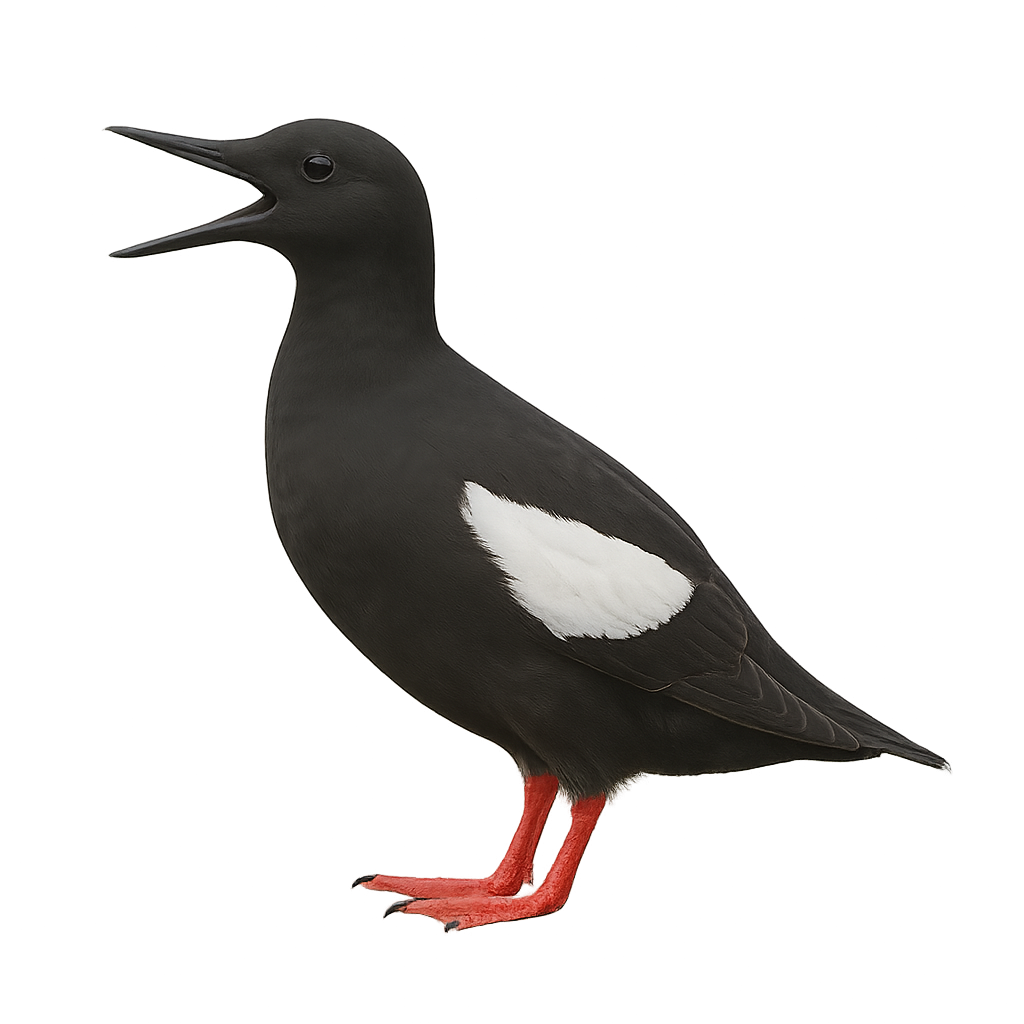Your wildlife photography guide.
Explore the black guillemot in detail, study its behavior, prepare your shots.
Where to observe and photograph the black guillemot in the wild
Learn where and when to spot the black guillemot in the wild, how to identify the species based on distinctive features, and what natural environments it inhabits. The WildlifePhotographer app offers tailored photography tips that reflect the black guillemot’s behavior, helping you capture better wildlife images. Explore the full species profile for key information including description, habitat, active periods, and approach techniques.
Black Guillemot
Scientific name: Cepphus grylle

IUCN Status: Least Concern
Family: ALCIDAE
Group: Birds
Sensitivity to human approach: Shy
Minimum approach distance: 20 m
Courtship display: May to June
Incubation: 28-30 jours
Hatchings: May to July
Habitat:
Rocky coasts, cliffs, islands of the North Atlantic and Arctic
Activity period :
Primarily active during the day, with peak activity in the morning and late afternoon.
Identification and description:
The Black Guillemot is a medium-sized seabird, measuring between 32 and 38 cm in length with a wingspan of 49 to 58 cm. In breeding plumage, it has a black body with a large white wing patch, bright red feet, and a red interior to its bill. In winter, its plumage becomes paler, with a light grey back and head and white underparts. It inhabits rocky coasts of the North Atlantic and Arctic, nesting in crevices of cliffs or under rocks. Its diet mainly consists of fish, crustaceans, and mollusks, which it captures by diving up to 50 meters deep. Although listed as Least Concern by the IUCN, it is sensitive to marine pollution and predation by introduced species.
Recommended lens:
300–500 mm – adjust based on distance, desired framing (portrait or habitat), and approach conditions.
Photography tips:
Use a telephoto lens to capture the black guillemot diving or feeding near rocky shores. Opt for early morning or late afternoon light to highlight the contrasts in its plumage. Remain discreet to avoid disturbing its natural behavior.
The WildlifePhotographer App is coming soon!
Be the first to explore the best nature spots, track rutting seasons, log your observations, and observe more wildlife.
Already 1 450 wildlife lovers subscribed worldwide

